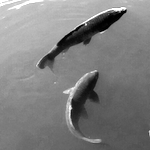Even casual observations of a crow in flight or a shark swimming demonstrate that animal propulsive structures bend in patterned sequences during movement. Detailed engineering studies using controlled models in combination with analysis of flows left in the wakes of moving animals or objects have largely confirmed that flexibility can confer speed and efficiency advantages. These studies have generally focused on the material properties of propulsive structures (propulsors). However, recent developments provide a different perspective on the operation of nature's flexible propulsors. First, we discuss how comparative animal mechanics have demonstrated that natural propulsors constructed with very different material properties bend with remarkably similar kinematic patterns. This suggests that ordering principles beyond basic material properties govern natural propulsor bending. Second, we consider advances in hydrodynamic measurements demonstrating suction forces that dramatically enhance overall thrust produced by natural bending patterns. This is a previously unrecognized source of thrust production at bending surfaces that may dominate total thrust production by the propulsor. Together, these advances provide a new mechanistic perspective on bending by animal propulsors operating in fluids – either water or air. This shift in perspective offers new opportunities for understanding animal motion as well as new avenues for investigation into engineered designs of vehicles operating in fluids.
|
|
|
|
A fundamental propulsive mechanism employed by swimmers and flyers throughout the animal kingdom
1 : Providence College
2 : Roger Williams University
3 : University of South Florida
4 : California Institute of Technology
5 : University of Southern California
|

 PDF version
PDF version
